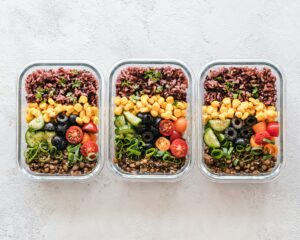For too long, we’ve viewed our minds and bodies as separate entities. You push yourself mentally at work, then hit the gym to unwind. But what if there was a way to create a more harmonious connection, where your thoughts, emotions, and physical health work together in beautiful synergy? Enter mind-body integration.
Breaking Down the Walls
Mind-body integration is the philosophy that our minds and bodies are deeply interconnected. Stress can manifest as headaches, negative thoughts can impact sleep, and a healthy diet can boost cognitive function. By acknowledging this link, we can cultivate practices that nurture both aspects of ourselves.
The Benefits of Wholeness
In our fast-paced world, it’s easy to feel fragmented. We juggle careers, relationships, personal goals, and the constant buzz of information overload. But what if there was a path to a more fulfilling life – where all these aspects come together in harmony? This is where the concept of wholeness comes in.
Wholeness isn’t about achieving some unrealistic state of perfection. It’s about embracing all parts of ourselves – the good, the bad, and the messy. It’s about integrating our physical, mental, emotional, and spiritual well-being into a cohesive whole. So why is wholeness so beneficial? Here are just a few ways it can enrich your life:
Enhanced Self-Acceptance
Wholeness fosters self-compassion. We learn to accept our flaws and vulnerabilities without judgment. This inner peace allows us to radiate confidence and authenticity in our interactions with the world.
Greater Resilience
When we are whole, we are better equipped to handle life’s inevitable challenges. We can bounce back from setbacks with greater ease because our foundation is strong.
Improved Relationships
Wholeness allows us to connect with others on a deeper level. We can be more present, empathetic, and understanding in our interactions. This fosters stronger, more meaningful relationships.
Increased Productivity and Creativity
When our minds and bodies are in sync, we can tap into a wellspring of creativity and focus. We become more productive and effective in all areas of our lives.
A More Fulfilling Life
Ultimately, wholeness is about living authentically and finding purpose in our lives. It’s about feeling a sense of belonging and connection to something larger than ourselves.
Stress Reduction
Practices like meditation and yoga can calm the nervous system and counter the negative effects of stress on the body.
Improved Physical Health
When you’re mentally well, you’re more likely to make healthy choices, leading to better sleep, nutrition, and overall physical functioning.
Greater Self-Awareness
By tuning into your physical and mental cues, you gain a deeper understanding of your needs and wants, fostering a sense of self-compassion.
The journey to wholeness is an ongoing process. It requires self-reflection, exploration, and a willingness to grow.
How to Find Your Path on a Wellness Journey
Wellness. It’s a word thrown around a lot these days, but what does it truly mean? And more importantly, how do you find your unique path to achieving it?
The truth is, that wellness isn’t a one-size-fits-all destination. It’s a personal journey of exploration, where you discover what makes you feel your best – physically, mentally, and emotionally. It’s about creating habits and routines that nourish your mind, body, and spirit, and empower you to live a fulfilling life.
1. Reflect and Redefine
The first step is to tune into yourself. Ask introspective questions: What brings me joy? What aspects of my life drain my energy? What are my core values? Journaling or meditation can be powerful tools for self-discovery. By understanding your needs and desires, you can start crafting a wellness plan that aligns with your authentic self.
2. Explore Different Dimensions
Wellness encompasses various aspects of your being. Consider:
-
Physical Health: Explore healthy eating habits, find an exercise routine you enjoy, and prioritize quality sleep.
-
Mental Wellbeing: Practice mindfulness techniques like meditation or deep breathing. Engage in activities that stimulate your mind and spark creativity.
-
Emotional Wellness: Develop healthy coping mechanisms for stress, and nurture positive relationships.
-
Social Wellness: Connect with loved ones, build a strong support system, and engage in activities that foster a sense of belonging.
3. Embrace Experimentation
There’s no magic formula for wellness. Don’t be afraid to try different approaches and see what resonates with you. Take a yoga class, join a hiking group, or explore healthy recipe options.
4. Celebrate Small Wins
The path to wellness is paved with small, consistent steps. Acknowledge and celebrate your progress, no matter how seemingly insignificant. This will help you stay motivated and keep moving forward.
5. Find Your Why
Identify your purpose for embarking on this journey. Is it to have more energy? Reduce stress? Live a longer, healthier life? A clear “why” will fuel your motivation and guide your decision-making.











